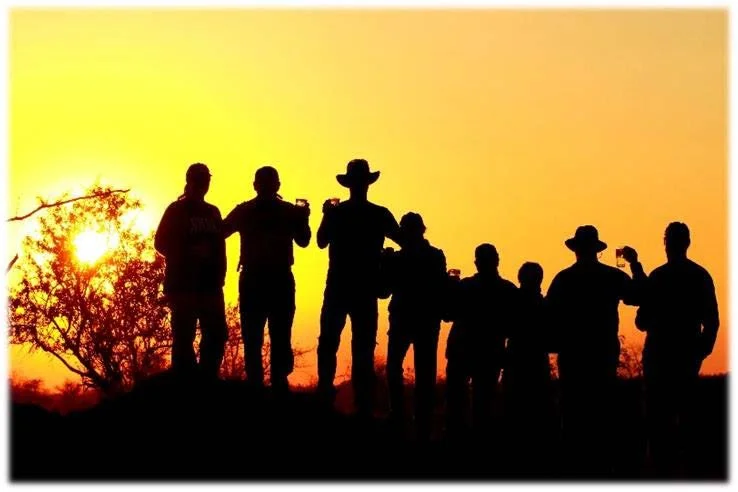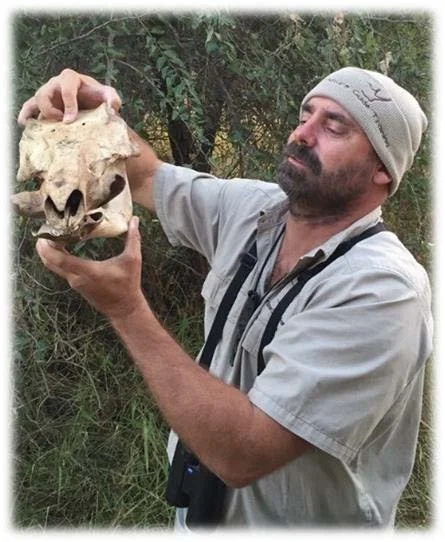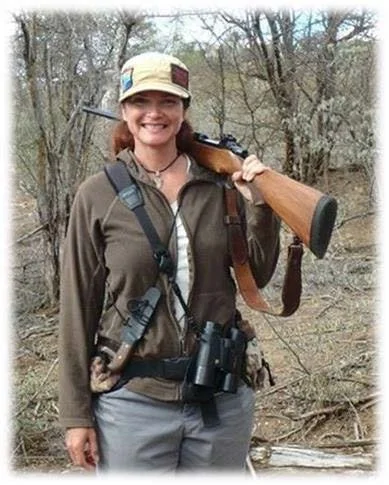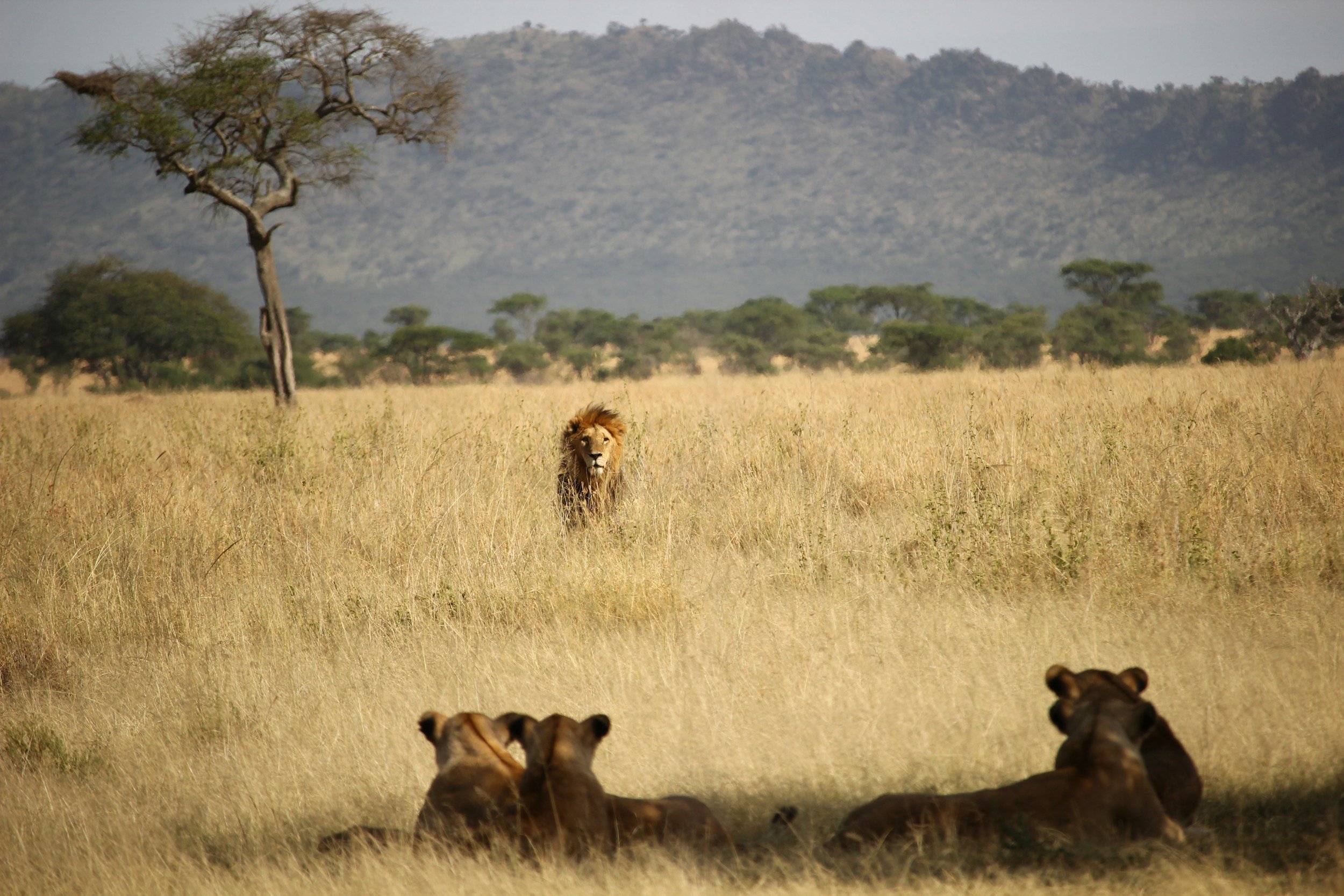
Tracking in Africa 2026
With Senior and Master Tracker
South African Tracking Intensive 2026
12 days, Senior and Master Tracker instructors, all in a World-Class African Ecosystem.
Arrival 4 May – 15 May Departure, Greater Kruger Region
Our days will emphasize small group mentoring, primarily in the identification and interpretation of the tracks & signs of Southern African animals. If we encounter them (and it’s certainly possible) we will also practice identifying fresh animal trails, and perhaps take a turn or two following and approaching those animals. We will definitely spend time observing animal behaviours (both on foot and from a vehicle). The program culminates in CyberTracker assessment in Track & Sign Identification.
South Africa is known for its wonderful array of wildlife, including the infamous 'Big Five'. Imagine being mentored by experts, honing your skills on the tracks and signs of African lion, Cape buffalo, white or black rhinoceros, African elephant and even the elusive leopard. You will learn how to identify and interpret their spoor, and something about their behaviors...
A typical day on the program
We will do at least one walk or game drive each day, giving you opportunities to see (and track) some of fantastic and charismatic African wildlife! A game-drive is the classic, open-air vehicles that you’ve no-doubt seen in the movies as an “African Safari!” Each day begins at sunrise and ends after sunset. Coffee and tea are provided at wake up, as well as simple cookies, toast and fruit. Then we head out to read the “tracker’s morning newspaper,” of tracks and signs left behind in the sand, and to watch animals for 3-4 hours before returning to our home base for a hearty brunch. After brunch there is time for a shower, a short nap, or some journaling time. Often, there will be a mid-day activity to facilitate your learning. Around 3 or 3:30, we will head out for another 3-4 hours, either on foot or by vehicle. If we traverse by vehicle, we often come back just after dark, spotlighting for nocturnal animals along the way. If you wish, and you are dressed professionally, you can take a turn in the “tracker seat.” The tracker seat is a metal chair mounted to the front of the vehicle that’s perfect for seeing tracks by day and spotlighting animals at night. Returning to the lodge, a hot dinner awaits, or a traditional South African braai (bar-b-que). Then, we often sit around the campfire listening to spotted hyenas laugh, owls hooting, or the other night sounds, sharing stories or chatting about the stars in the inky sky overhead. Sometimes, we might be awakened in the middle of the night to the sounds of roaring lions or the calls of leopards!
Africa is the undisputed birthplace of tracking!
Here, tracking in its myriad forms has been practiced for many, uncounted and undocumented millennia. No-one truly knows when or how tracking began, but it is safe to assume that the art and science of tracking has been going on since a time well before humans, in our current form, took their first tentative steps on the soils and sands of this planet. We are Trackers, and that’s what we do. We will track constantly, while we drive and walk, or while we eat, teach, and practice other, inter-related skills – tracking is all about observation, curiosity, and making sense of patterns. It has been called the oldest science, and has been forever practiced in the art of storytelling. You will see that it’s impossible not to track on our programs. Tracks and signs of animals are everywhere and we are tracking-obsessed.
As is fitting for all of our programs in the bush, mother nature often has a different plan than we do. As such, we create intentions, instead of a plan. For example, our intention on one morning might be to go down to the dry river and sit for an hour as the sun rises and watch and listen to the animals around us. Then, we discover a fresh leopard trail along the road. We might abandon our original intention and follow the leopard trail. Our intentions change based upon new information! This happens often on our programs and we enjoy this flexibility and ability to spontaneously take advantage of exciting opportunities. Our schedule is fluid, much like that of our ancestors who would have walked the landscape before us, hunting and gathering as they went.
Thus, our intentions for this program are to…
Watch wildlife and study animals and their natural behaviours, both on-foot and from vehicles. We will talk about and practice sitting quietly and observing in various environments on the land.
Continually practice our awareness skills, paying attention to animal alarm calls and other forms of Animal Communication. Some people call this bird language, but we know that it’s much older and much bigger than just birds, because all animals are always communicating with each other. The birds, African tree squirrels, vervet monkeys and chacma baboons are always speaking, and the silent giraffes stand sentinel while the impalas snort and carry-on. We will learn what to tune in to, and how easy to learn these important skills are. We will also practice using our other senses to keep us safe and satisfy our curiosity. Sometimes, we might conduct what we call an Observation Point (some people call this a sit-spot), to tune our senses and then we will compare our “notes” afterward.
Learn tracking! Your study of tracks and signs will progress from simple identification to interpreting short scenarios of behaviours and identifying fresh trails. We might even get an opportunity to follow clear footprints and speculate on animal behaviours as the tracks fade away in difficult or dangerous areas – leading us through or around these areas and to the animals. We will study everything, from the micro to the mega, and your program will culminate in a CyberTracker Track & Sign Evaluation - an opportunity to earn a qualification for this ancient skill in South Africa where the system was originally developed. CyberTracker is the original tracker certification system, and has become the international gold-standard for certifying the skill of wildlife trackers. While you are not guaranteed a certification (many people do get one), you will be surprised at what you can learn in such a short time through this teaching style and evaluation process, and at how that translates to learning your own ecosystem and species back home.
Accomodation and food
Our lodge is a small, private cluster of chalets on the banks of a seasonally dry riverbed. It is an extremely large, fenced reserve of almost 25,000 hectares (61,000 acres). It is so big, in fact, that Lee and Kersey have not yet had a chance to explore all of the roads in the last three years that they have been working there, and they are still discovering beautiful new areas. This reserve has a mixture of bushveld and savanna grassland type of habitats, mountain views, and many waterholes and deep river pools dotting the landscape to attract the abundant wildlife.
Your accommodation here is shared, in beautifully appointed rooms with proper beds and linens, and en-suite bathrooms with hot and cold running water and flushing toilets. Water here comes from deep underground wells, and is perfectly safe to drink. We can gather for a lesson, or relax in the shade of the large patio, watching for unique and colorful birds flying among the big trees along the river, or for small antelope feeding in the bush around us, or for herds of African elephants wandering by.
Meals are provided for you at the lodge. This includes a light breakfast consisting of coffee or tea, some rusks or biscuits, and fresh fruit. Lunches are hearty and dinners are wholesome – you won’t go hungry. There is always fresh fruit or some form of snacks available if you get peckish between meals. People often expect to lose weight here in South Africa on these types of programs, but never do! In fact, they often gain a little bit!
Please note that we can usually provide for regular diets containing meat, or for vegetarian, and even vegan options. Severely restricted diets, including keto, gluten or lactose free, or other allergies, are more difficult to cater for and might necessitate an additional fee. You should discuss any dietary issues with us early so we can come to the best arrangement for your health and budget.
Our “intended” schedule, at a glance…
Day 1 – Arrival & Orientation
Day 2-10 –Tracking and wildlife viewing
Day 11 – CyberTracker Track & Sign Evaluation
Day 12 - Morning activity and then a departure for flights out of Johannesburg O.R. Tambo International Airport (note that the ability to conduct a morning activity, and how long we will be able to be out on it will depend upon the departure time of the first flight out of JNB from your group’s participants)
COST
Early bird price (booking until 31.12.2025)- £2390
After 31.12.2025- £2550
Only 8 participants
To book £300 non-refundable deposit is required
Cost includes:
Wholesome food (some dietary requirements can be catered for, and some might require an additional catering fee)
Clean accommodation with ablution facilities
Professional guiding services of Lee Gutteridge & Kersey Lawrence and their teams
Professional tracking instruction by Senior Tracker Kersey Lawrence & Master Tracker Lee Gutteridge and their teams
Access to our small but comprehensive library for research and study
Gate fees and conservation levies
Safari experiences both on foot and by vehicle to observe animal behaviour
Presentations and discussions to enhance your learning experience
Participation in a CyberTracker Track & Sign Identification evaluation, the world’s first and only international Tracker Certification System, and an opportunity to earn a qualification for this ancient skill in South Africa
A small group, ground transportation from O.R Tambo International Airport at the beginning of your program and then from the program back to O.R Tambo International Airport at the end of your program
Cost excludes:
All flights (both international and domestic)
Visas, passports, and any other travel documents and tests
Travel insurance (highly recommended)
Gratuities for guides, trackers, drivers, and reserve staff
Personal effects such as snacks, batteries, toiletries, camera chargers, electrical adapters, and other supplies
Curios (souvenirs)
Beverages: beer, wine, sodas, etc. (water, coffee, and tea will always be provided at the lodges)
Personal medications and medical insurance while in SA
TRAVEL (not included)
You will fly into the South African metropolis of Johannesburg at the O.R. Tambo International Airport (JNB), but our time will be spent together in the area of the little and busy bush-town of Hoedspruit, which is on the doorstep of the vast and wild Kruger National Park. A comfortable ground transfer to from our private game reserve and O.R. Tambo International Airport has been arranged as a part of your program. More details after booking.
Whole experience is delivered to you by trackers who are recognised as one of the best in the world!
Lee Gutteridge is a Master Tracker and External Evaluator for CyberTracker Conservation. He has spent all of his adult life in the African bush, with more than 30 years of dirt-time. Lee is currently one of the highest qualified field guide in Southern Africa. He is also one of only 13 Scout Guides on the professional guiding association of Southern Africa (FGASA), with many additional specializations. Scout is the highest guiding qualification that can be earned in Southern African Guiding. Lee has authored or co-authored 12 published books on southern African natural history, to date, with more to come (pictured below). Lee’s company, Nature Guide Training began over twenty years ago as a training school for field guides in the safari industry. It has a well-earned reputation as an industry leader whose graduates are employed by some of the finest lodges across Africa. As a respected guide and trainer of guides, an expert tracker, and a wildlife author, Lee will educate and inspire you with passionate tales of African animals, wildlife trails, and close escapes.
Dr. Kersey Lawrence is a Senior Tracker and Evaluator with CyberTracker Conservation, and the founder of Original Wisdom. Her passion for learning led to a doctorate in the ecology of tracking and the culture of trackers, over a decade of award-winning teaching within the halls of university, and more than that at various outdoor schools around the world. Kersey’s research interests combine quantitative and qualitative methods, incorporating local knowledge and skill into modern science to advance our wholistic understanding of the natural world. Her practical work takes her from the African savannas to the forests of North America, where she teaches tracking experientially, and ensures that trackers meet the internationally recognized “gold-standard” set by CyberTracker. Through her dedication, Kersey inspires others to appreciate and protect the diverse beauty of our planet.
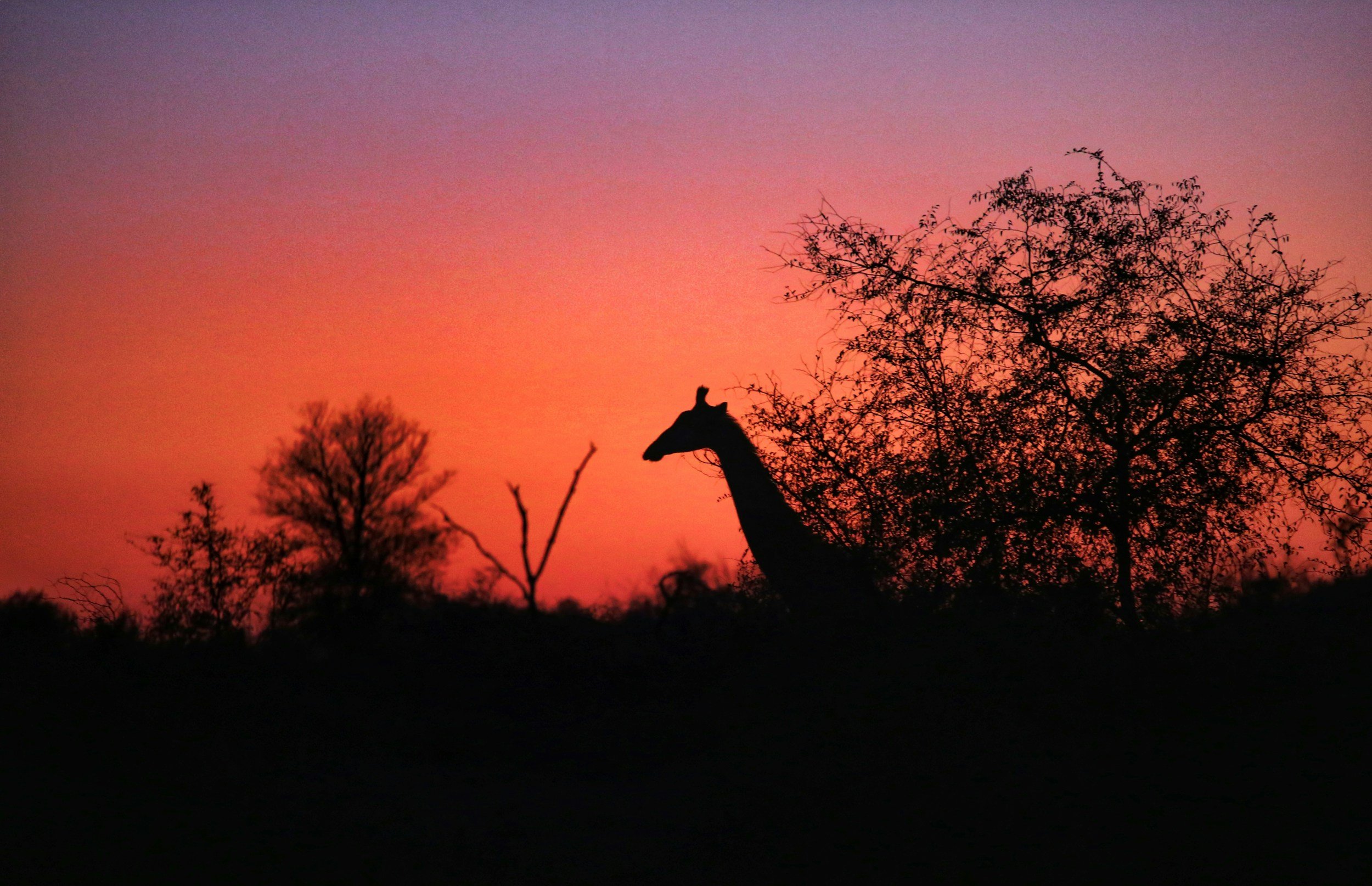
To book £300 non-refundable deposit now to secure your spot.
By booking you agreeing to our terms and conditions.




